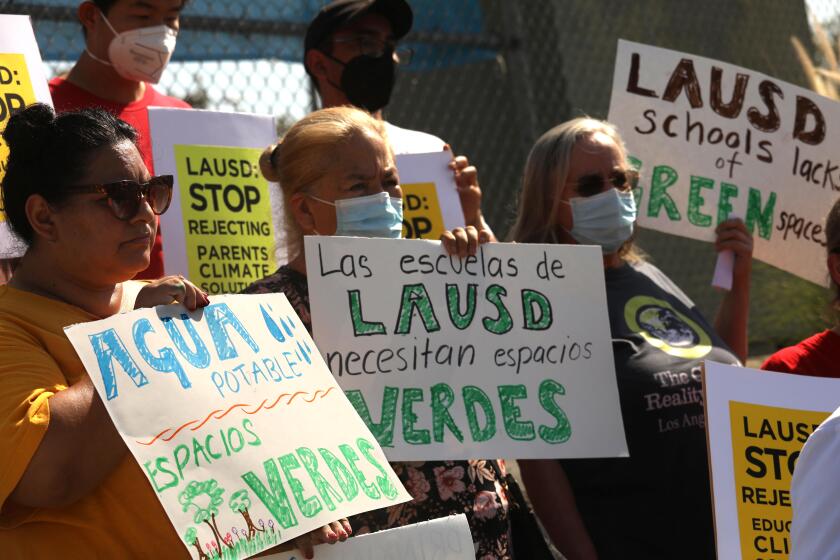Semper Fidel
- Share via
“I can tell you that he has recovered his fastball of 90 miles an hour,” Hugo Chávez informed the world last week after meeting with Fidel Castro, adding that the Cuban president for life “has his uniform hanging near him and he’s peeking at it, but he’s still warming up his arm,” and is “not yet ready to take the diamond.”
Too bad the metaphor-torturing Venezuelan president didn’t add that Castro has a deep bench of minor leaguers who are simultaneously on deck and getting walked around the bases by weak opposition pitching; so buy him some peanuts and Crackerjack. Or something like that. In the last few weeks, a murderers’ row of left-wing luminaries has been making the pilgrimage to Cuba for photo ops with the ailing Castro.
Vietnam’s Communist Party chief Nong Duc Manh had his Castro moment early this month, in what Granma described as a “moving, intense and fraternal encounter” that “ratified the close ties between the sister nations.” Bolivian President Evo Morales enjoyed what Periodico 26 termed “a fraternal and emotional encounter” shortly thereafter. Chavez, the ever-recovering jefe‘s own Edith Wilson, matched his bats to Castro’s balls last week, underscoring the “excellent solidarity and friendship relations between the [two] sister Latin American nations.” And on-again-off-again Nicaraguan President Daniel Ortega managed to squeeze in a “brotherly” audience over the weekendkicking of a freedom tour that will include stops in Algeria, Libya and Iran.
In other words, if you thought the Castro death watch was macabre, get ready for a truly horrifying recovery. With Castro (by most accounts not a shy character) strictly eschewing the kind of public appearances that might put concerns about his physical condition to rest, it’s left to a parade of acolytes to greet the track-suit-sporting Maximum Leader in his convalescence, and come away with glowing reports of his return to vigorous good health. Chávez’s flurry of Yogi Berraisms was only the most colorful of the optimistic diagnoses.
For Castro, these visits provide obvious benefits: welcome proofs that he’s still not dead (Castro’s sister-in-law Vilma Espin Guillois, wife of acting president Raul Castro, died yesterday), and a validation of his sense of himself as a man of history.
For the cream of the global left, the benefits of an appearance with the Cuban dictator are more diffuse. “I would draw a distinction between most leaders from developing countriesfor whom this is more about international solidarity with the great figure or champion of the Third Worldand Latin American leaders,” says Edward Gonzalez, a Cuba expert at the Rand Corp. “For leaders in Central and South America, thumbing their noses at the United States is not only a foreign policy matter but also material for domestic consumption. These countries have very strong leftist movements, and this is a way of courting the left in their own countries... Despite what Frank Fukuyama said about the end of history, history is still going on. The left has come back in recent years, and there’s a sense among these leaders that they’re going to be on the right side of history, that the left will be rejuvenated and Marxism/Leninism will make a comeback.”
Even among the resurgent Latin American left, however, the sense of hubris isn’t universal. More pragmatic presidents like Brazil’s Luiz Inacio Lula da Silva and Chile’s Michelle Bachelet are far more circumspect in their dealings with the Castro/Chávez axis, and it is unclear how thoroughly even Castro’s devotees, Chávez excepted, want to reproduce Cuba’s catastrophic economic model. Ortega returned to office having tried to recast himself as a moderate; it remains to be seen whether he wants to repeat his underwhelming presidential performance from the 1980s.
It’s also notable that the United States remains committed to providing justifications for Castro’s absurd and paranoid rhetoricby interfering in the case of the accused terrorist Luis Posada Carriles, maintaining the counterproductive Cuban embargo and conniving (at best) in the attempted coup against Chávez.
But there’s something a little, well, pathetic in the spectacle of a resurgent left bathing in the glow of an 80-year-old who took power in 1959 and whose gaseous verbiage, flat-earth economics and relentless demagoguery have barely evolved in the nearly half-century since. The dictator’s uncertain recovery may or may not be his last trick, but it’s impressive nonetheless: In Castro’s 21st century, everything new is old again.
Tim Cavanaugh is web editor of The Times’ editorial page.
Send us your thoughts at opinionla@latimes.com.
More to Read
A cure for the common opinion
Get thought-provoking perspectives with our weekly newsletter.
You may occasionally receive promotional content from the Los Angeles Times.









